Dates 24 Oct 1918 – 3 Nov 1918 | ||
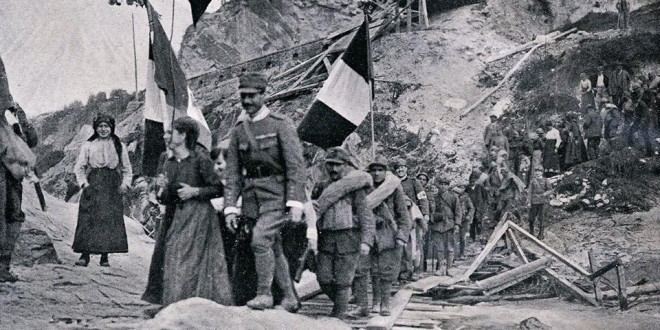 | ||
57 divisions51 Italian3 British2 French1 Czechoslovak1 US regiment7,700 guns 61 divisions6,145 guns 37,461 dead or wounded 528,00030,000 dead50,000 wounded448,000 captured5,000+ artillery pieces captured Results Decisive Italian victory, End of the Austro-Hungarian Empire Combatants United Kingdom, Kingdom of Italy, French Third Republic Similar | ||
World war i battle of vittorio veneto 1 4
The Battle of Vittorio Veneto was fought from 24 October to 3 November 1918 near Vittorio Veneto on the Italian Front during World War I. The Italian victory marked the end of the war on the Italian Front, secured the dissolution of the Austro-Hungarian Empire and contributed to the end of the First World War less than two weeks later.
Contents
- World war i battle of vittorio veneto 1 4
- World war i battle of vittorio veneto 4 4
- Background
- Order of Battle
- Prelude
- Battle
- Aftermath
- References
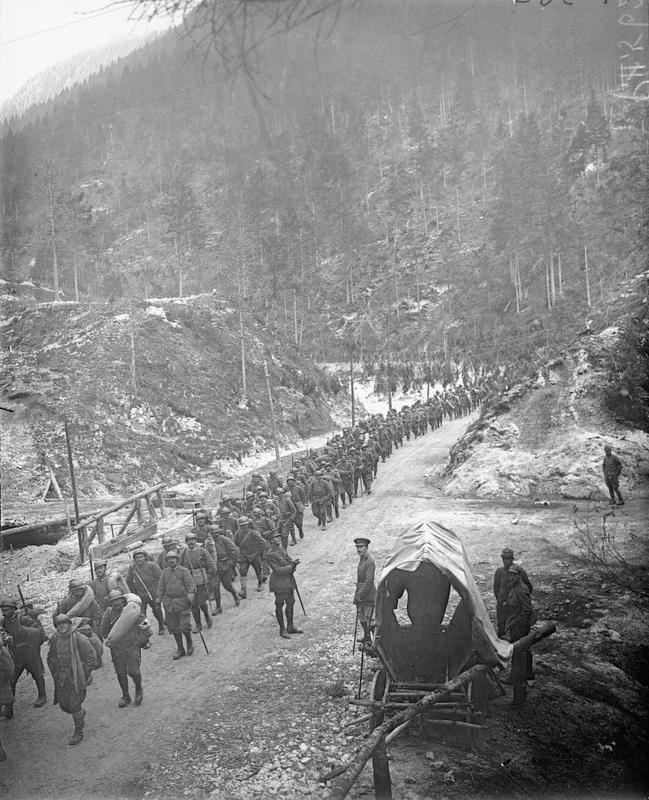
Some Italians see Vittorio Veneto as the final culmination of the Risorgimento nationalist movement, in which Italy was unified.
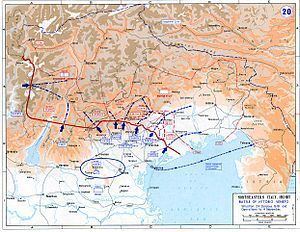
World war i battle of vittorio veneto 4 4
Background
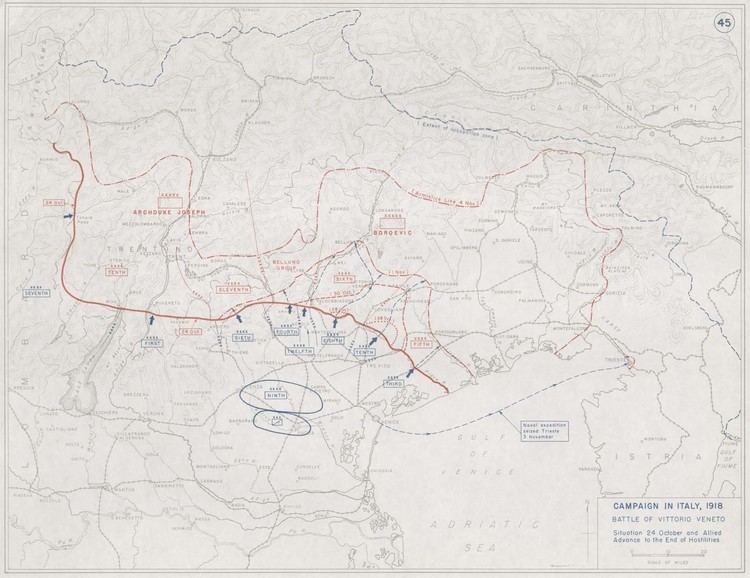
During the Battle of Caporetto, from 24 October to 9 November 1917, the Italian Army lost over 300,000 men and was forced to withdraw, causing the replacement of the Italian Supreme General Luigi Cadorna with General Armando Diaz. Diaz reorganized the troops, blocked the enemy advance by implementing defense in depth and mobile reserves and stabilized the front-line around the Piave River.
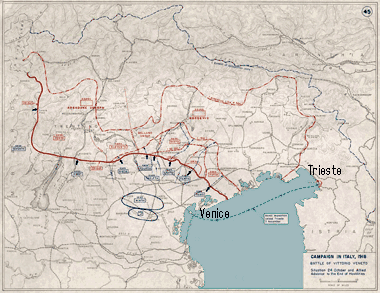
In June 1918, a large Austro-Hungarian offensive, aimed at breaking the Piave River defensive line and delivering a decisive blow to the Italian Army, was launched. The Austro-Hungarian Army tried on one side to force the Tonale Pass and enter Lombardy, and on the other side to make two converging thrusts into central Venetia, the first one southeastward from the Trentino, the second one southwestward across the lower Piave. The whole offensive came to worse than nothing, the attackers losing 60,000 dead, 90,000 wounded and 25,000 captured.
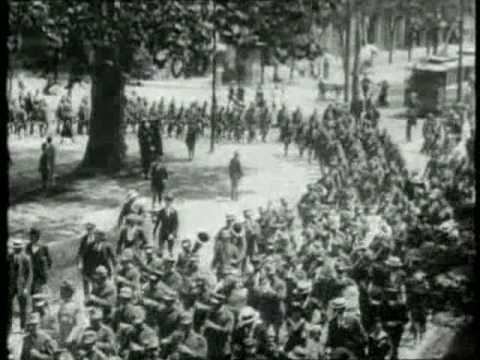
After the Battle of the Piave, General Armando Diaz, the Italian commander in chief, despite aggressive appeals by Allied commanders, deliberately abstained from offensive action until Italy would be ready to strike with success assured. In the offensive he planned, three of the five armies lining the front from the Monte Grappa sector to the Adriatic end of the Piave were to drive across the river toward Vittorio Veneto, so as to cut communications between the two Austrian armies opposing them.
Allied forces totaled 57 infantry divisions, including 51 Italian, 3 British (23rd, 7th and 48th), 2 French (23rd and 24th), 1 Czechoslovak (6th) and the 332nd US Infantry Regiment, along with supporting arms. The Austro-Hungarian army was equal in strength with 61 infantry divisions (about a million men), but both sides were ravaged by influenza and malaria and the Austrians only had 6,145 guns to 7,700 Allied.
The Italian armies in the mountains were merely to hold the front line and follow up the enemy when he retreated. The task of opening the attack and taking on the strongest positions fell to Fourth Army (Lieutenant-General Gaetano Giardino) on the Grappa. Twelfth Army, consisting of one French and three Italian divisions was commanded by the English-speaking Lieutenant-General Enrico Caviglia and he had under command Tenth Army (Lieutenant-General Lord Cavan) to protect his right flank. Lord Cavan's army consisted of two British and two Italian divisions and they too were expected to cross the Piave by breaking the Austrian defenses at Papadopoli Island. Third Army was simply to hold the lower Piave and cross the river when enemy resistance was broken. Ninth Army, which contained the Czechoslovak Division and the 332nd US Infantry Regiment as well two Italian divisions, was held in reserve. The Allies had 600 aircraft (93 Anglo-French, including 4 RAF squadrons) to gain complete air superiority in the final offensive.
Order of Battle
The Allies : (Armando Diaz)
Austria-Hungary
Prelude
As night fell on 23 October, leading elements of Lord Cavan's Tenth Army were to force a crossing at a point where there were a number of islands, and Cavan had decided to seize the largest of these — the Grave di Papadopoli — as a preparation for the full-scale assault on the far bank. The plan was for the British 7th Division to occupy the northern half of Papadopoli while the Italian 11th Corps took the southern half. The British troops detailed for the night attack were the 2/1 Honourable Artillery Company (an infantry battalion despite the title) and the 1/ Royal Welch Fusiliers. These troops were helpless to negotiate such a torrent as the Piave, and relied upon boats propelled by the 18th Pontieri under the command of Captain Odini of the Italian engineers. On the misty night of the 23rd the Italians rowed the British forces across with a calm assurance and skill which amazed many of those who were more frightened of drowning than of fighting the Austrians. For the sake of silence the HAC used only their bayonets until the alarm was raised, and soon seized their half of the island. The Italian assault on the south of Papadopoli was unfortunately driven off by heavy machine-gun fire. Nevertheless, the Austrians had been badly unnerved by the savagery of the British attack.
Battle
On 24 October, the anniversary of the Battle of Caporetto, in the early hours Commando Supremo launched the splintering attack on the Monte Grappa designed to draw in the Austro-Hungarian reserves. At 03:00 the right wing of the Italian Fourth Army began a barrage to give time for its men to move into position. At 05:00 the rest of the artillery joined in. The infantry began to struggle up the steep slopes and secondary peaks which the Austrians had held for so long. The flooding of the Piave prevented two of the three central armies from advancing simultaneously with the third; but the latter, under the command of Earl Cavan, after seizing Papadopoli Island farther downstream, won a foothold on the left bank of the river on 27 October. In the evening the Allies had covered so much ground that they were over-extended and vulnerable to a counter-attack. The Italian Tenth Army maintained its ground and had established a bridgehead 2.5 miles (4.0 km) deep and 5 miles (8.0 km) broad. The British captured 3,520 prisoners and 54 guns. Svetozar Boroević von Bojna, the Austro-Hungarian commander, ordered a counter-attack on the Italian bridgeheads on the same day, but his troops refused to obey orders, a problem confronting the Austrians from that time on, and the counter-attack failed.
On 28 October, Czechoslovakia declared independence from Austria-Hungary. The next day, the South Slavs proclaimed independence, and on 31 October, Hungary withdrew from the union, officially dissolving the Austro-Hungarian state. On 28 October, under these new political and military conditions, the Austro-Hungarian high command ordered a general retreat. Vittorio Veneto was seized the next day by the Eighth Italian Army, which was already pushing on to the Tagliamento river. Trieste was taken by an amphibious expedition on 3 November.
The Italian Eighth Army troops which had managed to cross the Piave were only able to communicate with the west bank by using swimmers. The swimmers were furnished by one of the most elite units (storm troops) in Italian history — Arditi Corps, the Caimani di Piave ("the Caimans of the Piave"). There were 82 of them recruited by Captain Remo Pontecorvo Bacci after Caporetto. Carrying a resolza knife and two hand grenades, they were trained to remain in the powerful currents of the icy Piave for up to 16 hours; 50 died in the river during the campaign. The Italian Twelfth Army, commanded by French General Jean Graziani, continued to advance, supported on the right by the Eighth Army.
On 29 October the Italian Eighth Army pushed on towards Vittorio Veneto, which its advance guard of lancers and Bersaglieri cyclists entered on the morning of the 30th. The Italian Third Army forced a crossing of the Lower Piave while raids in the mountains disclosed that the Austrians were withdrawing there. Reserves including the 332nd US Infantry Regiment poured over the Piave behind the Italian Tenth Army.
At dawn on the 31st, the Italian Fourth Army resumed the offensive on the Monte Grappa and this time was able to roll over the old Austrian positions and advance on Feltre. In the mountains and on the plain the Allied armies pushed on until an armistice was arranged. The result was that Austria-Hungary lost about 30,000 killed in action and 428,000 prisoners (50,000 by 31 October; 100,000 by 1 November; 428,000 by 4 November). The Italians suffered during the 10 days' struggle 37,461 casualties (dead and wounded) — 24,507 of them on the Monte Grappa.
The Armistice of Villa Giusti was signed on 3 November at 15:20, to become effective 24 hours later, at 15:00 on 4 November.
Aftermath
The Austrian command ordered its troops to cease hostilities on 3 November. Following the signing of the armistice, Austrian General Weber informed his Italian counterparts that the Imperial army had already laid down its weapons, and asked to cease combat immediately and to stop any further Italian advance. The proposal was sharply rejected by the Italian General Badoglio, who threatened to stop all negotiations and to continue the war. General Weber repeated the request. Even before the order to cease hostilities, the Imperial Army had already started to collapse, beginning a chaotic retreat. Italian troops continued their advance until 3 p.m. on 4 November. The occupation of all Tyrol, including Innsbruck, was completed in the following days.
Under the terms of the Austrian-Italian Armistice of Villa Giusti, Austria-Hungary’s forces were required to evacuate not only all territory occupied since August 1914 but also South Tirol, Tarvisio, the Isonzo Valley, Gorizia, Trieste, Istria, western Carniola, and Dalmatia. All German forces should be expelled from Austria-Hungary within 15 days or interned, and the Allies were to have free use of Austria-Hungary’s internal communications. They were also obliged to allow the transit of the Entente armies, to reach Germany from the South.
The battle marked the end of the First World War on the Italian front and secured the end of the Austro-Hungarian empire. As mentioned above, on 31 October Hungary officially left the personal union with Austria. Other parts of the empire had declared independence, notably what later became Yugoslavia. The surrender of their primary ally was another major factor in the German Empire's decision that they could no longer continue the war. On 30 October the Wilhelmshaven mutiny erupted, shortly afterwards the German Revolution of 1918–1919 started to spread from Kiel. Less than a week after the Austro-Hungarians, the Germans requested an armistice.
